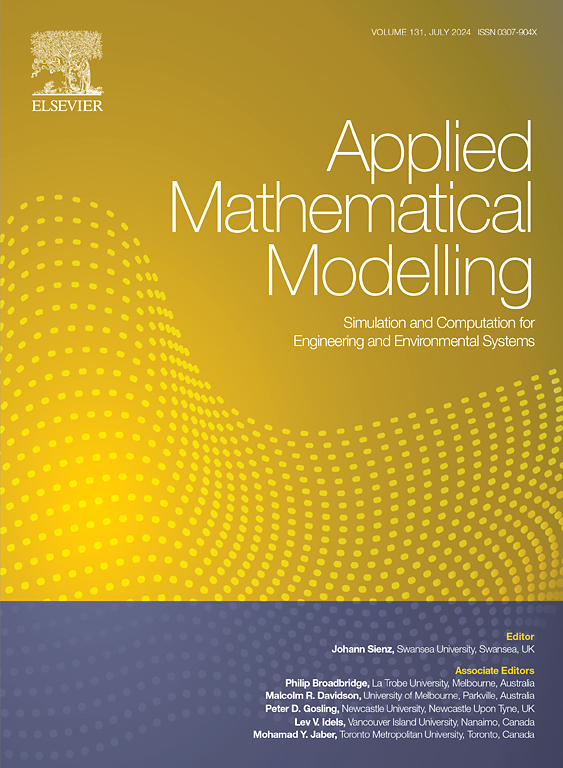具有周期性传播率的延迟流行病模型的动态变化
IF 4.4
2区 工程技术
Q1 ENGINEERING, MULTIDISCIPLINARY
引用次数: 0
摘要
我们引入了新的流行病模型,该模型由延迟微分方程系统描述单菌株和双菌株流行病,疾病传播率随时间周期性变化,并以新感染个体的数量为基础。感染、康复和因免疫力下降而返回易感区之间的过渡由伴随的时间延迟决定。借助定点理论证明了解的正向性、存在性和唯一性。将延迟微分方程简化为积分方程有助于确定平衡解的分析估计。当存在两个菌株时,它们会相互竞争,基本繁殖数较大的菌株在种群中占优势。然而,两种菌株共存时,流行病爆发的规模受基本繁殖数的制约。这项工作的结果通过与季节性流感数据的比较得到了验证。本文章由计算机程序翻译,如有差异,请以英文原文为准。
Dynamics of delay epidemic model with periodic transmission rate
We introduce novel epidemic models with single and two strains described by systems of delay differential equations with a periodic time-dependent disease transmission rate, and based on the number of newly infected individuals. Transitions between infected, recovered, and returning to susceptible compartments due to waning immunity are determined by the accompanying time delays. Positiveness, existence and uniqueness of solutions are demonstrated with the help of fixed point theory. Reducing delay differential equations to integral equations facilitates determining the analytical estimation of the equilibrium solutions. When there are two strains, they compete with each other, and the strain with a larger basic reproduction number dominates in the population. However, both strains coexist, and the magnitudes of epidemic outbreaks are governed by the basic reproduction numbers. The results of this work are verified through comparison with seasonal influenza data.
求助全文
通过发布文献求助,成功后即可免费获取论文全文。
去求助
来源期刊

Applied Mathematical Modelling
数学-工程:综合
CiteScore
9.80
自引率
8.00%
发文量
508
审稿时长
43 days
期刊介绍:
Applied Mathematical Modelling focuses on research related to the mathematical modelling of engineering and environmental processes, manufacturing, and industrial systems. A significant emerging area of research activity involves multiphysics processes, and contributions in this area are particularly encouraged.
This influential publication covers a wide spectrum of subjects including heat transfer, fluid mechanics, CFD, and transport phenomena; solid mechanics and mechanics of metals; electromagnets and MHD; reliability modelling and system optimization; finite volume, finite element, and boundary element procedures; modelling of inventory, industrial, manufacturing and logistics systems for viable decision making; civil engineering systems and structures; mineral and energy resources; relevant software engineering issues associated with CAD and CAE; and materials and metallurgical engineering.
Applied Mathematical Modelling is primarily interested in papers developing increased insights into real-world problems through novel mathematical modelling, novel applications or a combination of these. Papers employing existing numerical techniques must demonstrate sufficient novelty in the solution of practical problems. Papers on fuzzy logic in decision-making or purely financial mathematics are normally not considered. Research on fractional differential equations, bifurcation, and numerical methods needs to include practical examples. Population dynamics must solve realistic scenarios. Papers in the area of logistics and business modelling should demonstrate meaningful managerial insight. Submissions with no real-world application will not be considered.
 求助内容:
求助内容: 应助结果提醒方式:
应助结果提醒方式:


